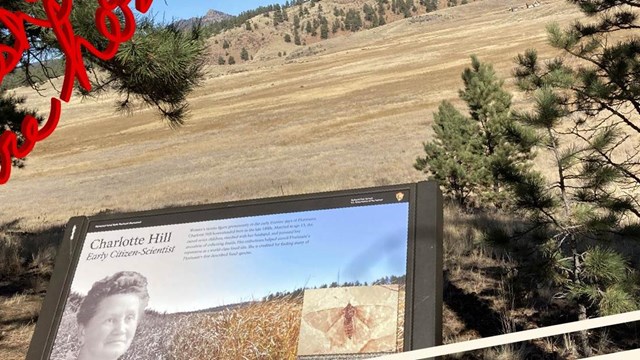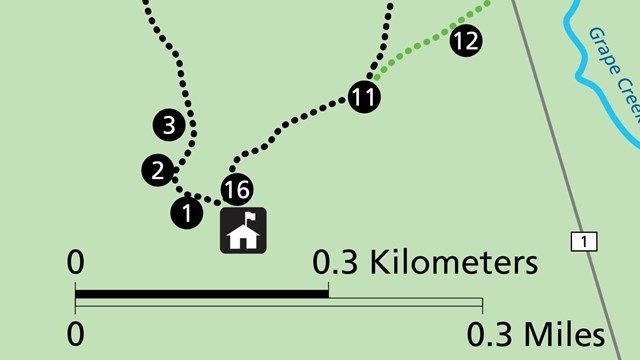
NPS/SIP: Mariah Slovacek 
NPS 
NPS How do we know the stumps are from Redwoods?Cone and leaf fossils of Sequoia affinis (ancient redwood), though smaller, are most similar to its descendant, Sequoia sempervirens (modern coastal redwood). 
NPS* Wheeler? 
NPS* How large and how old were the trees?Thirty-four million years ago, huge redwood trees grew here in a warmer climate along the wet bottom of a stream valley. The trees may have been more than 230 feet (70 meters) tall and 500 to 1,000 years old when they were buried in volcanic mudflows. 
Stop 7: Charlotte Hill
Click her to go to Stop 7. 
Virtual Tour Homepage
Explanation of the virtual tour and links to all stops. 
Stop 9: Fierce Competition
Click here to go to Stop 9. |
Last updated: December 30, 2021
